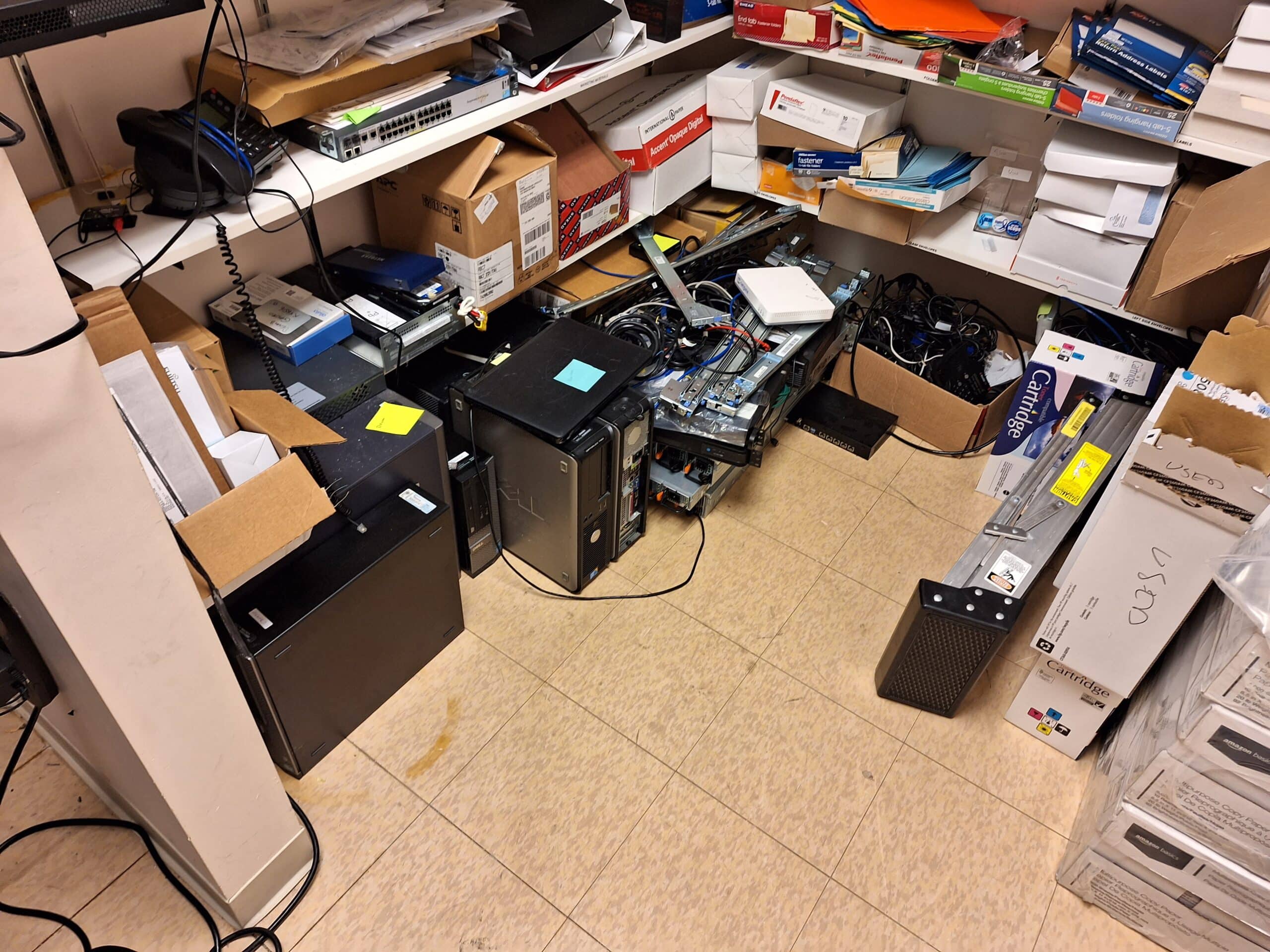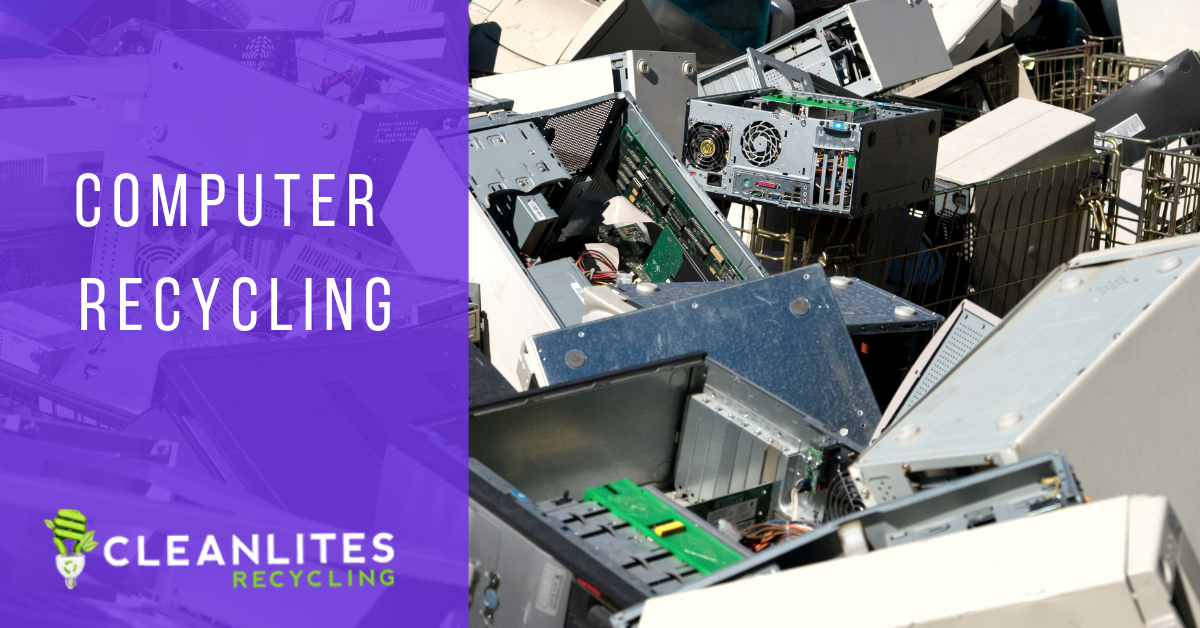Revitalize Your Work Space with Accountable Computer Recycling Practices
Revitalize Your Work Space with Accountable Computer Recycling Practices
Blog Article
Lasting IT Solutions: Trustworthy Computer System Recycling Provider
In light of this, the need for reliable computer system reusing services has actually never been even more vital. In this discussion, we will explore the environmental effect of e-waste, the benefits of accountable computer recycling, just how to select a reliable recycling solution, the recycling process for computers and digital gadgets, and the duty of federal government laws in e-waste administration.
The Environmental Impact of E-Waste
The inappropriate disposal of digital waste, typically called e-waste, has considerable environmental effects. E-waste describes disposed of electronic tools such as computer systems, smart devices, and tvs (computer recycling). These tools include hazardous products such as lead, mercury, cadmium, and brominated fire resistants, which can be damaging to both human health and the environment if not properly managed
When e-waste is improperly gotten rid of, it usually winds up in garbage dumps or is blazed, releasing toxic materials right into the air, water, and soil. The launch of these hazardous products can contaminate groundwater, pollute the air, and add to soil destruction, posturing severe health threats to neighboring communities and communities.
In addition, the improper disposal of e-waste additionally adds to the depletion of natural resources. computer recycling. If effectively recycled, numerous digital gadgets contain important steels like gold, silver, and copper that can be recovered and reused. Nevertheless, when e-waste is not reused, these beneficial sources are shed, and the need for brand-new resources increases, resulting in enhanced mining activities and more ecological destruction.
To reduce the environmental impact of e-waste, proper recycling and disposal methods have to be used. This consists of the responsible collection, dismantling, and recycling of electronic devices to recoup beneficial products and guarantee the safe management of hazardous substances. Implementing reliable e-waste administration methods is critical to shield the atmosphere, preserve resources, and promote a lasting future.

Benefits of Accountable Computer System Recycling
Appropriately recycling computer systems supplies a wide variety of advantages, consisting of ecological conservation and resource preservation. Responsible computer reusing not only helps stop digital waste from ending up in landfills, yet it additionally lowers the requirement for raw materials and power in the production of brand-new gadgets.
Among the most significant advantages of responsible computer system recycling is the conservation of the atmosphere. When digital waste is improperly taken care of, it can launch hazardous compounds such as lead, mercury, and cadmium right into the soil and water, presenting a threat to ecological communities and human wellness. By recycling computer systems, these hazardous products can be securely extracted and dealt with, decreasing the threat of contamination.
An additional advantage is resource preservation. Computers consist of beneficial materials like gold, silver, copper, and aluminum, which can be recuperated and reused via reusing procedures. By removing and recycling these materials, the need for mining new resources is lowered, saving natural deposits and lowering the environmental effect of source removal.
In addition, responsible computer recycling assists to minimize energy usage. Production new computer systems needs a substantial quantity of power, from the extraction of raw products to the assembly process. By recycling computers and recycling their components, the energy-intensive manufacturing procedure can be avoided, causing a decrease in greenhouse gas discharges and a more lasting usage of power resources.
Exactly How to Select a Trustworthy Computer Recycling Service
When selecting a computer reusing solution, it is necessary to take into consideration a couple of vital variables to guarantee that you select a trustworthy and trusted provider. First of all, it is critical to validate if the reusing solution follows proper ecological guidelines and techniques. A trustworthy copyright will have certifications and accreditations that show their commitment to accountable recycling. Search for accreditations such as R2 (Responsible Recycling) or e-Stewards, which make sure that the recycling procedure fulfills strict criteria for environmental security and information safety and security. Second of all, inspect if the service offers safe data devastation. Information safety and security is a vital worry when recycling computers, as sensitive information stored on old tools can be susceptible to burglary or misuse. A credible recycling solution should have safe and secure information destruction procedures in area, such as data wiping or physical damage of storage space tools. Additionally, consider the service's track document and reputation. Seek reviews or testimonies from previous consumers to gauge their degree of consumer complete satisfaction and dependability. Last but not least, consider the service's transparency and responsibility. A trustworthy copyright should be able to supply comprehensive info regarding their reusing process, consisting of exactly how they take care of unsafe products and ensure proper disposal. By considering these elements, you can choose a computer system reusing solution that is moral, reputable, and ecologically accountable.
The Recycling Process for Computers and Digital Devices
To guarantee responsible disposal and decrease environmental impact, understanding the reusing process for computer systems and digital gadgets is important when selecting a credible recycling service. The reusing process for these tools typically involves a number of stages.
To start with, the tools are collected from individuals, services, or drop-off factors. This collection process may entail transportation logistics and safe managing to safeguard the delicate data had within the tools. Once accumulated, the devices are sorted based upon their type, such as desktop computers, laptop computers, or mobile phones.
After arranging, the gadgets undergo a detailed data damage procedure to ensure that any type of individual or sensitive information is permanently gotten rid of. This action is essential to secure the privacy and security of organizations and individuals. Information destruction methods may include cleaning, degaussing, or physical devastation of the storage space media.
Following, the gadgets are dismantled right into their specific components. This enables the splitting up of various products, such as plastics, steels, and circuit card. These products are then sent to specialized recycling facilities for more processing.
The recycling centers Click This Link use various methods to remove valuable products from the digital waste. These products can be reused or repurposed in the production of new items. The staying waste is disposed of in an environmentally liable manner, adhering to regulatory standards.
The Function of Federal Government Regulations in E-Waste Administration
Government guidelines play an essential duty in the effective management of e-waste. With the continuous development of the electronics industry and the boosting worry for ecological sustainability, the need for proper disposal and recycling of electronic waste has come to be more apparent. Government laws aid to guarantee that e-waste is managed in a accountable and lasting manner.
One of the main duties of government regulations is to establish criteria and guidelines for e-waste management. These guidelines define the appropriate techniques for collection, transport, and recycling of electronic waste. By developing these requirements, federal governments can make certain that e-waste is taken care of in such a way that lessens its effect on the setting and human health.
Federal government see here policies additionally play a crucial duty in imposing the correct disposal of electronic waste. They require stores and makers to take duty for the items they produce and market. This consists of applying take-back programs, where makers are accountable for accumulating and reusing electronic waste from consumers. These guidelines assist to shift the concern of e-waste monitoring from the individual customer to the market, ensuring that electronic waste is handled in a more sustainable manner.

Final Thought
To conclude, it is essential to take into consideration the ecological effect of e-waste and pick a reliable computer system reusing solution to responsibly throw away digital tools. By following government policies and taking part in appropriate recycling processes, we can reduce the unfavorable impacts of e-waste on the setting and promote a much more sustainable future.
In this discussion, we will certainly check out the ecological effect of e-waste, the benefits of liable computer system recycling, just how to pick a credible recycling service, the recycling process for computer systems and digital devices, and the function of government regulations in e-waste monitoring. Computers consist of useful materials like gold, silver, aluminum, and copper, which can be recouped and recycled via reusing processes.Moreover, accountable computer reusing assists to decrease energy consumption. visite site Information protection is an essential worry when recycling computer systems, as sensitive details saved on old gadgets can be vulnerable to burglary or abuse. By taking into consideration these elements, you can pick a computer system recycling service that is moral, trusted, and ecologically accountable.
Report this page